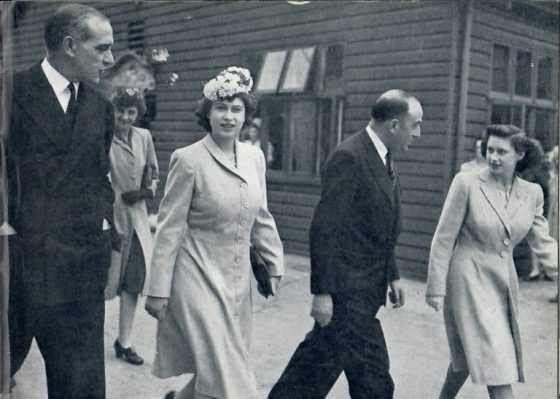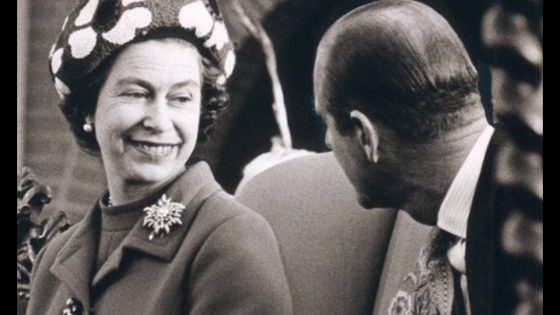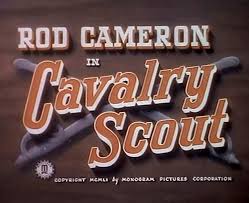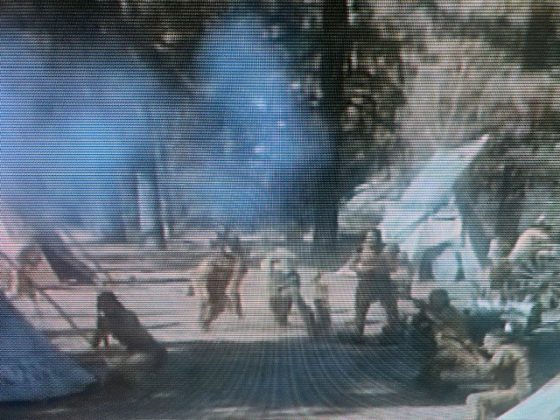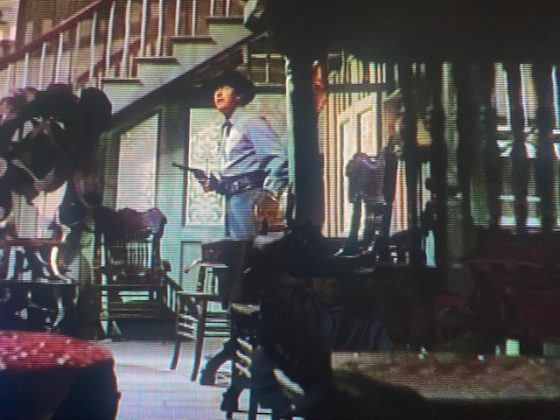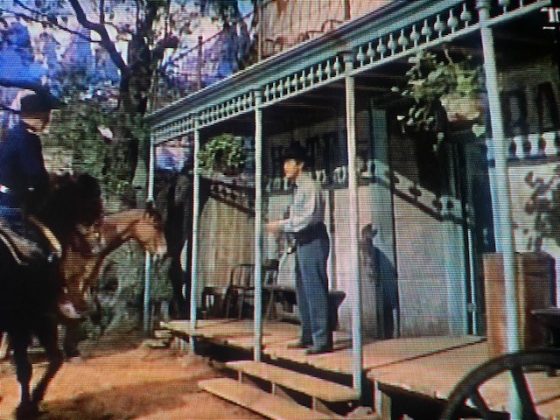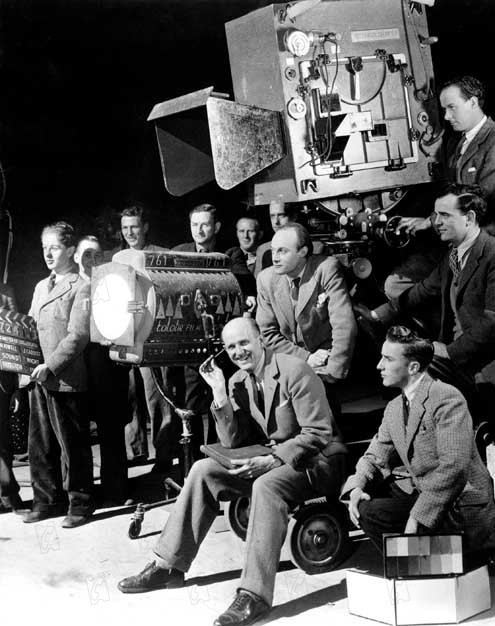The two met at the premiere of The Battle of the River Plate in London’s Leicester Square. Marilyn was there to accompany her then husband Arthur Miller. =
At the time, both Marilyn and Queen Elizabeth II were just 30 years old. The Queen had ascended to the throne at the age of 25 following the death of her father, King George VI. Marylin had just finished filming The Prince and the Showgirl in London; the film premiered in June 1957.
Victor Mature was in the line-up to meet The Queen also – he was regularly over here making films at that time


Queen Elizabeth II meeting Marilyn Monroe at the Royal Command Film Performance at Leicester Square in London on October 1956
On Monday, October 29, 1956—as the looming Suez Canal crisis dominated the headlines—Marilyn Monroe was to meet the Queen. When the day dawned, the actress was once again absent from the set of The Sleeping Prince, and while it is impossible to say if she had prior permission to have the day off, those keeping tabs on her timekeeping wrote down her absence as “Not available.” It is doubtful that the movie even crossed Marilyn’s mind that day, as her full attention was on readying herself for the evening ahead. These preparations included hours of hairstyling with Gordon Bond, and then her make-up was applied. Lastly, it was time to slip into a gown that would make headlines around the country.
Officials may have instructed the female attendees to dress conservatively, but the dress Marilyn chose to wear when meeting Queen Elizabeth II was like nothing they had in mind. Made of gold lamé, the gown was so low-cut that the tops of Marilyn’s breasts were on full display. Tight to the body, with spaghetti straps and a fold of material meeting at the chest and heading down towards the floor, the dress came complete with a matching cape and bag.

Marilyn Monroe, seen here with her husband Arthur Miller, arrived in London in 1956 to film The Prince and the Showgirl, and ended up meeting the Queen of England.
Several staff were on hand to help Marilyn get into the gown, before she slipped on long gloves and platform sandals, similar to those worn at the premiere of A View from the Bridge. A quick spritz of perfume, and Marilyn grabbed her handbag and descended the stairs. The driver was waiting outside, and the smiling actress crunched her way over the gravel drive and climbed into the car, accompanied by Arthur Miller and Milton H. Greene. For Jerry Juroe, Marilyn’s departure from Parkside House meant that he could breathe again. For the past few weeks, his major concern had been to ensure that Marilyn arrived at the theatre before Her Majesty, and although it would be a little tight, the actress accepted and achieved the challenge.
As the chauffeur pulled up outside London’s Empire Theatre, it was as though the entire population of Britain was gathered outside. It was a cold October evening and a biting wind blew its way around Leicester Square, but this didn’t stop fans from queuing for hours just for a glimpse of Marilyn, the Queen and an abundance of other famous folk. Dressed in winter coats, hats and gloves, the crowds screamed and pushed forward, while policemen tried to hold them back. As Marilyn exited the car, a photographer swooped in and took a picture, looking down the front of her dress. He moved aside, and then the fans’ excitement reached fever pitch.
“Marilyn! Marilyn!” they chanted, and the smiling actress turned and waved to everyone who greeted her. By this time, she was having trouble keeping her cape on her shoulders, and she and Arthur spent some time adjusting it, before fighting their way through the crowds and into the theatre.Marilyn Monroe, seen here with Arthur Miller during her 1956 London trip
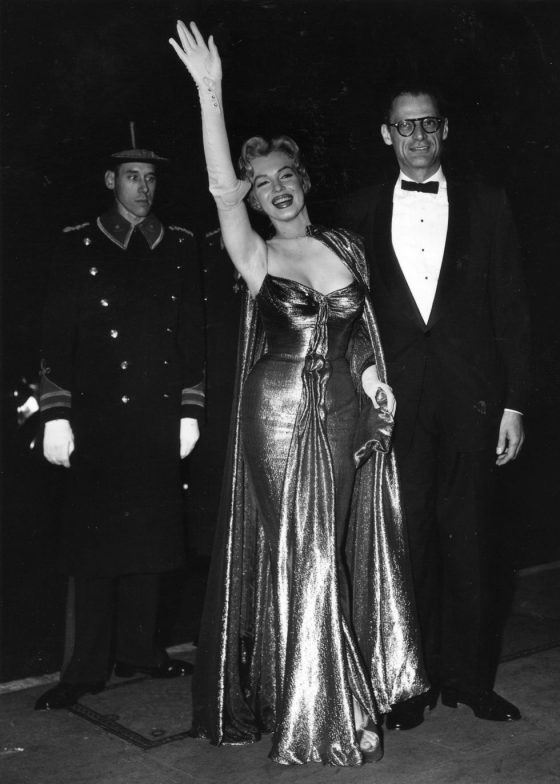
Marilyn Monroe, seen here with Arthur Miller during her 1956 London trip
Inside the foyer, the place was alive with guests, staff, photographers and, as the film was to be The Battle of the River Plate, active seamen. As Marilyn wandered past, holding her wrap around her chest, most of the crowd turned and stared. She smiled broadly, then threw back her cape to reveal her spectacular dress. Flashlights popped, and then she and Arthur Miller ascended the steps and reached the space where the celebrities were lining up to meet the Queen. The rest of the audience, meanwhile, made their way into the auditorium, where they took their seats to the sound of musician Nelson Elms on the organ and the orchestra of the Royal Marines School of Music. Soon they would watch the Queen greeting the famous attendees via the cinema screen.
In the upstairs lounge, an excited but nervous Marilyn had removed her cape and was sandwiched between actors Victor Mature and Anthony Quayle (Miller was not being presented to the Queen). Quayle was one of the stars of The Battle of the River Plate, and the rest of the line-up read like a Who’s Who of cinema royalty. Stars included Brigitte Bardot, Peter Finch, Norman Wisdom, Anita Ekberg, Vera-Ellen, Sylvia Syms, John Gregson, Mary Ure and Marilyn’s arch-enemy, Joan Crawford. In addition, there was also a generous smattering of industry professionals, as well as Royal Navy-related guests who had been involved—or were related to a participant—in the real Battle of the River Plate.

Marilyn Monroe also met Princess Margaret during her trip
As Marilyn waited with fellow celebrities in the long, buzzing lounge, the Queen arrived in Leicester Square with her sister, Princess Margaret. Also in the party were Lord and Countess Mountbatten, though the Duke of Edinburgh was absent, having already left for a four-month official trip on the Royal Yacht Britannia.
Her Majesty, wearing a beautiful black, full-skirted gown and a diamond-and-emerald tiara, was greeted outside by Charles Penley, the Empire’s general manager, and then slipped into the foyer, where she was met by Reginald Bromhead, president and chairman of the Cinematograph Trade Benevolent Fund. That done, the Queen made her way upstairs, where she not only met the famous attendees, but also many journalists. Some of the pressmen crouched on the floor, others hustled for a better view, but all followed Her Majesty as she greeted her guests.
The line was long, and Marilyn was more than halfway down. At times the actress stared ahead, nervously waiting her turn, but as the Queen moved closer, Marilyn could be seen peeping out and then excitedly chattering to actor Victor Mature.
As the Queen shook hands with the stars, Reginald Bromhead discreetly glanced at his notes to make sure he named each celebrity correctly. And then it was Marilyn’s turn.
As the Queen gave her a brief look up and down, the actress took Her Majesty’s hand and then descended into a well-practiced curtsy. The two then chatted for several minutes, and covered subjects including being neighbours in the Queen’s beloved Windsor. “We love it,” Marilyn said. “As we have a permit my husband and I go for bicycle rides in the Great Park.”Marilyn Monroe with Laurence Olivier at London’s Savoy Hotel in 1956.
The Queen finally moved on, and then Marilyn repeated the process with Princess Margaret, who was wearing a rose-and-gold brocade gown. The women chatted about cycling, life in England and the making of The Prince and the Showgirl

“It’s going on very well,” Marilyn told the Princess. “And it will be with regret that we have to leave in about a fortnight’s time.”
Princess Margaret then greeted actor Anthony Quayle, but this was not the last of her conversation with Marilyn. Hearing them talk about A View from the Bridge, the actress interrupted the conversation and asked the royal to go and see the play. “The Princess laughed and said she might,” Marilyn said afterwards and, sure enough, Princess Margaret did attend a performance a short time later.  Monroe and Miller leaving the Comedy Theatre after a London performance of his play A View From The Bridge
Monroe and Miller leaving the Comedy Theatre after a London performance of his play A View From The Bridge
Once she had made her way up the line, the Queen was greeted by six-year-old Nicholas Douglas Morris, who presented her with flowers and gave a little bow. Only when Her Majesty had spoken to every person in the line was it time to take her seat with the audience and celebrities in the theatre. The lights dimmed, a cartoon production called The History of the Cinema was shown and then it was time for the main feature, The Battle of the River Plate. In addition to watching the film, the attending celebrities were required to line up onstage and take a bow, one by one. As before, Victor Mature stood on one side of Marilyn, and Anthony Quayle on the other. However, because the actress had not been to the rehearsals, she had no idea what she should do next, and as the group stood behind the closed curtain, waiting for their names to be called, Marilyn panicked. In his 1990 autobiography, Quayle wrote that the actress asked him over and over what she should do when her name was called, but despite explaining several times, Marilyn was too anxious to remember.
As the line shuffled forward, she turned to actor Victor Mature, and asked him what she should do. “Fall on your ass baby,” he replied, and then slipped through the curtain. Marilyn was introduced several seconds later and, despite her nerves, she stepped forward, turned right, then left, and the crowd went crazy.
As Marilyn exited the theatre, she was buzzing with excitement. Before she could get into her waiting car, several reporters stepped forward and asked what she thought of the royal guests.
“The Queen is very warm-hearted,” Marilyn said. “She radiates sweetness. She asked how I liked living in Windsor, and I said, ‘What?!’ and she said that as I lived in Englefield Green, near to Windsor, we were neighbors. So, I told her that Arthur and I went on bicycle rides in the park.”
Another journalist asked if it was difficult to perfect her curtsy. “Not a bit,” Marilyn said, laughing, and then she demonstrated for him.
The previously nervous woman who had begged off the prior rehearsal was brimming with confidence as she slid into her car and headed back to Parkside. In contrast, outwardly confident actor Victor Mature said that he was so nervous he couldn’t remember a thing the Queen said to him; Brigitte Bardot admitted she was worried about her curtsy; and acidic Joan Crawford claimed that she had never been so scared in her life
The Queen, the Duke of Edinburgh and Princess Margaret were all in attendance, and Her Majesty took time to speak to Jane Russell. The actress revealed that she was going to make Gentlemen Marry Brunettes, based on a book by Anita Loos, the author of Gentlemen Prefer Blondes. During the conversation, Princess Margaret told Jane Russell how much she enjoyed Blondes, while the Duke of Edinburgh jokingly wondered if brunette Russell was getting even with Marilyn, since the latter had been the blonde in the earlier film.
In 1961, an article appeared in People that gave a glimpse of the Queen’s thoughts on Marilyn, through the eyes of an unnamed “friend.” The article said that after the Royal Command Performance in 1956, the Queen became fascinated with Marilyn and watched every one of her films. She apparently told the friend, “I thought Miss Monroe was a very sweet person. But I felt sorry for her, because she was so nervous that she had licked all her lipstick off.” Footage of the event seems to back this up, since Marilyn can be seen licking her lips as she waited for the royal guests to reach her.

